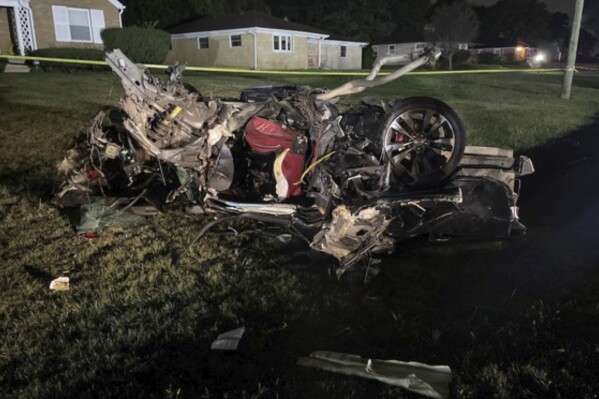Black man’s 1845 lynching in downtown Indianapolis recounted with historical marker
INDIANAPOLIS (AP) — The story of a Black man beaten to death in Indianapolis in a racially motivated 1845 lynching is now part of the city’s cultural trail in the form of a historical marker.
The marker describing John Tucker’s slaying was unveiled Saturday by state and local leaders and members of the Indiana Remembrance Coalition, The Indianapolis Star reported. It was placed along downtown Indianapolis’ cultural trail close to where Tucker was killed nearly 180 years ago.
“Uncovering and documenting uncomfortable history is an obligation that we all must share. We must always seek to tell the full story of our history,” Eunice Trotter, director of Indiana Landmark’s Black Heritage Preservation Program, said at the unveiling.
Tucker was born into slavery in Kentucky around 1800 and later obtained his freedom. He moved to Indianapolis in the mid-1830s and was a father to a boy and a girl.
 A murder suspect mistakenly released from an Indianapolis jail was captured in Minnesota, police say
A murder suspect mistakenly released from an Indianapolis jail was captured in Minnesota, police say
 3 dead after sports car crashes in Indianapolis, minutes after police end pursuit
3 dead after sports car crashes in Indianapolis, minutes after police end pursuit
 Authorities search for suspect wanted in killing who was mistakenly released from Indianapolis jail
Authorities search for suspect wanted in killing who was mistakenly released from Indianapolis jail
On July 4, 1845, Tucker was assaulted by a white laborer, Nicholas Wood, as Tucker walked along Washington Street. He defended himself while retreating up Illinois Street, after which Wood and two other white men beat Tucker to death. A crowd gathered to watch.
Wood was later convicted of manslaughter, “a rarity in an era when Black Hoosiers could not testify in court,” the marker reads. The other men involved in his beating death served no time.
Tucker’s lynching forced his children into a legal battle over his property and perpetuated generational trauma for the family he left behind, said Nicole Poletika, a historian and editor of Indiana History Blog.
While often associated with hangings, the term lynching actually is broader and means “to put to death (as by hanging) by mob action without legal approval or permission,” according to Merriam-Webster.
Lynchings in Indiana from the mid-1800s to 1930 “intentionally terrorized Black communities and enforced the notion of white supremacy,” the historical marker states. Trotter said lynchings were not uncommon and happened in communities across the state.
“Having the knowledge of such instances forces us to confront some of the most harmful, painful layers of the African American experience in Indiana,” she said. “Acknowledging them is an important part of the process of healing and reconciliating and saying that Black lives matter.”
Disclaimer: The copyright of this article belongs to the original author. Reposting this article is solely for the purpose of information dissemination and does not constitute any investment advice. If there is any infringement, please contact us immediately. We will make corrections or deletions as necessary. Thank you.



